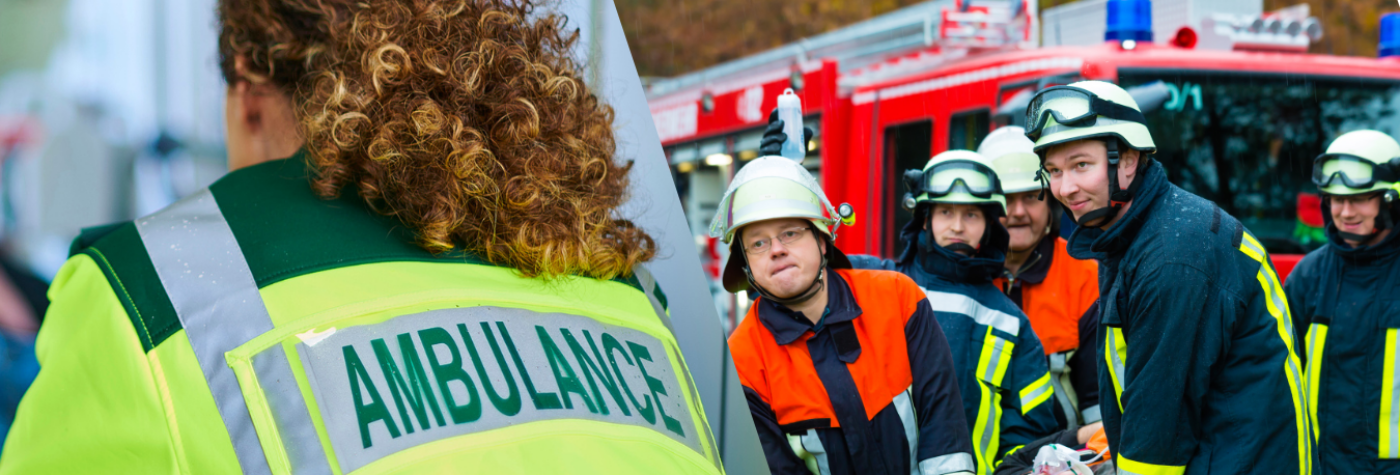A feasibility study for a shared emergency services Mobile Data Terminal upgrade
Share:

key fact
The Mobile Data Terminal market is expected to reach multi-million-pound figures by 2032, reflecting the value of this technology for multiple industries including the emergency services.
Our client has overall statutory responsibility for delivering emergency services to more than 100,000 citizens. Fire & Rescue and Ambulance services share a single Command and Control Centre operating on a shared Computer Aided Dispatch (CAD) platform. This enables emergency responders to communicate with the Control Centre via a simple coding system using their Tetra radios. Advances in Mobile Data Terminal (MDT) technology have the potential to revolutionise this communication by ensuring a rich flow of real-time incident information and mapping data between Command and Control, first responders, and emergency service divisions.
Challenge
Our client knew there was a desire within its emergency service divisions to upgrade the way in which emergency responders communicate with the control centre. A transformation of this scale is no small undertaking. Leadership wanted to understand the requirements, options, costs, risks, and benefits of the possible upgrade to inform a comprehensive business case evaluation. They also wanted to understand practical implications: whether the new system could realistically be shared between services, how it would serve the needs of different staff and services, the scope of options offered by vendors, and the best pathway for procurement.
Given the essential nature of the services in question, and the fact that in-flight operations must be protected from disruption or downtime, a thorough feasibility assessment was a critical first step. Mason Advisory has a long track record of emergency services experience, both as sector practitioners and IT change consultants. So, we were selected to perform the feasibility study and associated activities, to generate the intelligence IT leadership needed to make an informed decision.
Solution
From our own emergency services experience, we knew how vital the input of frontline staff, as well as Command and Control personnel and IT / technology stakeholders, would be to informing any upgrade. So, we began with a period of discovery interviews with key stakeholders from Command and Control, first response, and IT.
As well as facilitating stakeholder feedback, we used our sector and supply chain knowledge to add pro-active input. We suggested possible scenarios and solutions, carefully exploring the extent to which stakeholders felt each option might support their duties, responsibilities, and ways of working.
This guided discussion enabled us to compile a detailed list of requirements categorised on a MoSCoW scale, plus a future MDT inventory, based on the quantity and type of emergency response vehicles. We then leveraged our vendor market knowledge and relationships to explore and validate possible options, costs, risks, and assumptions. We developed a cost model, estimating the investment required to procure the hardware, implement the solution, and run a managed MDT service.
Our findings clearly established that a shared MDT service, with terminals installed throughout the vehicle fleet, would indeed be a viable option. Our client provisionally approved the proposal, retaining us for a further soft market engagement to issue and assess vendor Requests for Information (RFIs).
Outcome
We completed the engagement within three months. Our work has confirmed that an MDT platform could feasibly be shared between Fire & Rescue and Ambulance services, promising significant operational and cost-saving benefits. Our report has given IT leadership a clear, detailed, and fully validated picture of what the upgrade will involve, including all operational, technical, cost and change implications as well as estimating the timeline for transformation.
With the business case initially approved and a shortlist of RFIs compiled, our client’s team is now considering their options and preparing to procure their MDT platform via competitive tender. The outcome will be an upgraded, future-ready MDT platform that facilitates real-time, multi-way incident and mapping
communication between emergency service personnel and units. Ultimately, first responders will be equipped to arrive at the scene armed with more information, faster two-way communication, and the ability to deal with the emergency as effectively as possible.
“Our organisation gained valuable insights into the technology landscape for Mobile Data Terminals (MDTs), helping the front-line teams understand the art of the possible. We now have a clear vision for software, hardware, and managed service providers to support and inform our decision-making.”
Strategic Change Manager, representing our client
If you would like to speak to one of our experts, regarding this case study, email contact@masonadvisory.com.